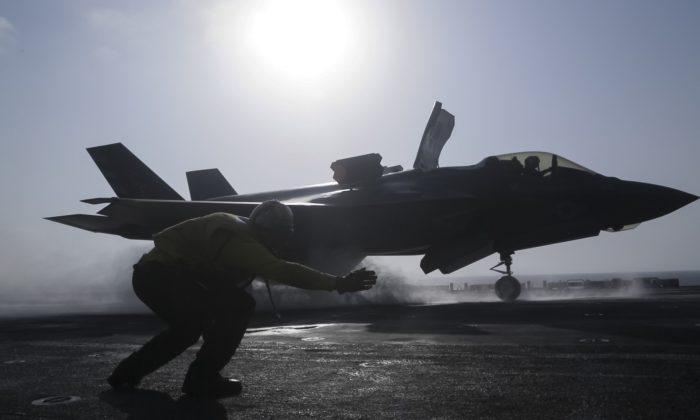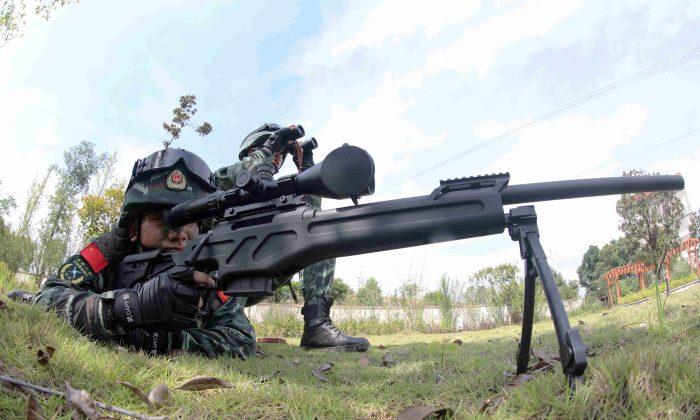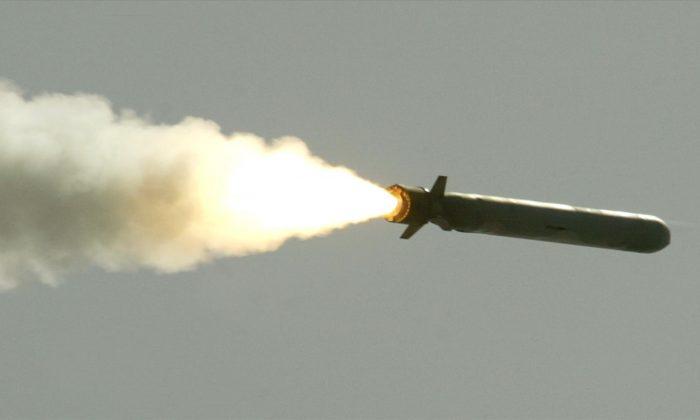The two greatest military threats facing the United States are China and Russia, and the U.S. military currently wouldn’t be able to fight both simultaneously, a report released by The Heritage Foundation concludes.
His conclusion emerged from assessments (employing a grading scale from “very weak” to “very strong) of each of the military services and the military’s “nuclear enterprise.” The Army, Navy, and Air Force were graded as “marginal,” while the Marine Corps was given a grade of “weak.” The military’s nuclear capabilities were “marginal.”
Overall, these assessments were attributed to a lack of readiness brought on as a result of underfunding since the end of the Cold War, and accompanying lack of modernization and decreased size of the forces.
In keynote remarks at the event, Sen. Joni Ernst (R-Iowa), a member of the Senate Armed Services Committee, expressed alarm at the overall assessment of the U.S. military as “marginal.”
“The United States is facing increasing global threats in all domains of warfare,” she warned, singling out Russia and China as “peer or near-peer” threats.
The report’s “assessment of the adequacy of today’s U.S. military is based on the ability of America’s armed forces to engage and defeat two major competitors at roughly the same time,” a measure developed through the study of major U.S. wars since World War II and government defense studies.
By that benchmark, the military is “still too small,” said Wood, a senior research fellow in defense programs at Heritage.
“Threats to US Vital Interests,” led by Russia and China, are graded on a scale from “Low” to “Severe” in the Index, he said.
The report notes that “scores for both…come close to being elevated to ‘severe’ from their current ‘high,’” and that “China’s provocative behavior continues to include militarization of islands that it has built in highly disputed international waters of the South China Sea. China also continues its aggressive naval tactics to intimidate such neighboring countries as Japan and the Philippines and continues to bully other countries that try to exercise their right to navigate international waters in the region.”
Dean Cheng, a senior research fellow with Heritage’s Asian Studies Center, pointed out that the Department of Defense is required by law to produce “an annual report on China’s military and security activities and capabilities.” Given that Russia is identified along with China as a top “peer competitor,” he suggested Russia might be subject to regular “comparable reports” as well.
The overall “high” threat level to U.S. interests and the “marginal” overall state of U.S. military strength found by the report culminates in a military whose “deterrent value is certainly being compromised,” Wood concluded.
Similarly, the report’s final line asserts: “America’s military branches will continue to be strained to meet the missions they are called upon to fulfill,” short of “a significant positive turn in the threat environment,” a “reassessment of core U.S. security interests,” or increased military funding.




